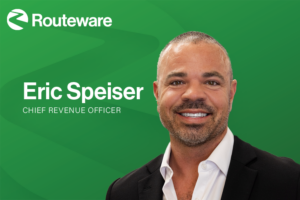Multi-family recycling is the “middle child” of recycling projects for many communities. We all know multi-family homes have unique circumstances and that the strategies for single-family homes simply don’t fit. Unfortunately, we often tailor the single-family resources that we have available rather than building from scratch. This leaves us with poor participation, ill-fitting promotion and education materials, and high contamination.
It’s time to give your multi-family recycling the attention it deserves, and we’re here to help! Here are some strategies and tips to get your multi-family recycling program up to speed.
The Issue
First, let’s consider why multi-family recycling is so important.
About 16 percent of homes in the US are rented in multi-family buildings — from apartment complexes to townhomes — according to the US Census Bureau.
These homes are behind on participation and diversion, although pinning down the impact of multi-family recycling in 2019 proves difficult. The last national survey on multi-family recycling in the US was conducted in 2001, when the Environmental Protection Agency (EPA) found the average program’s diversion rate was just 14.6 percent. Contamination rates for recycled materials in these programs is usually higher than that of material recycled from single-family homes as well, according to a University of Michigan report.
The Stakeholders
If you’re charged with creating or improving a multi-family recycling program, it’s helpful to understand the stakeholders first. In multi-family, the major contenders are the property owner, the property manager and the tenants.
The hauler is a fourth audience you’ll need to engage. Whether public or private, your hauler will understand the issues with your community’s multi-family service better than anyone else, and they can be a great ally in developing your strategy. Reach out to them first to help target your community’s most challenging areas.
Your goal as a municipal recycling guru is to target each stakeholder with a pitch that explains why they should participate or work on increasing participation. Then you’ll need to provide them with a clear call to action for success, plus a toolkit. Include long-term goals, and of course, rewards for their efforts.
The Pitch
Now that we’ve identified the stakeholders, let’s leverage their motivations and frustrations to engage them with a pitch.
By educating and activating stakeholders, you’ll create champions “on the inside” who can help you get started with recycling or make improvements. Here’s how:
Property Owner
Motivations: Cost savings, lack of time to spend on new programs
Most building owners don’t realize that the cost of hauling garbage is often higher than the cost of recycling, so spell it out in dollars and cents. As a building’s trash stream decreases, dumpsters can be downsized and tipped less frequently, reducing fees associated with garbage. A 2016 report from the City of New York’s budget office suggests that the more a community recycles, the less recycling costs overall.
Because property owners are busy, it’s also important to let them know you’re available to assist with program implementation. Your ability to do the “heavy lifting” in terms of coordination and education may well persuade them to jump in.
How to do it: To persuade a property owner, you can create a simple, one-page case study about a multi-family residence that recently implemented recycling. Highlight waste fees before and after recycling to calculate cost savings. Share your case study on LinkedIn and make it available at your local Chamber of Commerce meetings, extolling the fact that “Property owners can save $X per yard by participating in our multi-family recycling program!”
Property Manager
Motivations: Adding value for current tenants, attracting future tenants
In 2019 every property manager has likely heard from at least one tenant that there should be a recycling program. To retain current tenants by adding value, and to attract future tenants, implementing recycling can be a solid strategy. In fact, the City of St. Louis encourages property managers to market recycling to current and prospective tenants, and it works!
How to do it: Send a short, sweet e-blast to the property management contacts on your list. Liberate them to use your program as a sales pitch for potential tenants and as great, new service for existing tenants. Send them the pitch that is going to sell their tenants: “New Recycling Program Implemented Just For You!”
Tenants
Motivations: Being “green,” making a difference at home
The tenant you’re pitching to is already on board with recycling: You just need to provide them with the opportunity to recycle at home — and encourage them to spread the word about recycling to others.
Being involved in the implementation and success of a program promotes a sense of belonging, which in turn strengthens ongoing engagement. When tenants recycle and help spread the word as volunteers, they can even increase their physical and social health, lower rates of depression, and increase their self-worth according to The Journal of Social Science and Medicine.
How to do it: Social media is key here. Use your community’s social media platforms to post a rally for help to all tenants of multi-family homes — and be specific! If not all multi-family homes are involved in the community’s waste and recycling programs, then list the participation requirements. Consider a post like this: “Be a recycling champion in your building! Are you a tenant in a multi-family building? Does our community service your building’s waste? If so, our community needs your help.”
Call to Action & Recycling Toolkit
Once you’ve garnered the attention of your stakeholders, the next step is to equip them for program success with a call to action supported by a toolkit. Create a recycling toolkit for each stakeholder that includes everything they need to start or improve participation. Your job is to make it as easy as possible for them to take the lead.
Here’s what you’ll want to include in each toolkit:
Benchmarking Tools: Help stakeholders measure the success of their programs by creating a benchmark and goals.
Whether they are improving an existing recycling program or implementing a new program, it can be very important to benchmark. A visual waste audit is a quick and easy way to create a benchmark, which considers the following:
- Initial service(s) offered
- Size of container(s)
- Frequency of collection
- Percentage of contamination
- Percentage of recyclables in waste stream
- Percentage of waste in recycling stream
Since your champions likely don’t have a background in waste, be sure to include best practices, suggested goals, a timeline for re-auditing, and definitions (diversion, contamination, waste streams, etc.).
More information about benchmarking and toolkits for recycling in public spaces is available from Keep America Beautiful.
Signage: Encourage them to post more than the basic “What Goes Where” information. Suggest that signage be provided to individual units and then placed strategically throughout the building, anywhere waste and recycling may be disposed such as chute rooms, waste rooms and common areas.
Signage should also be strategic. Follow the Recycling Partnership’s Pro-Tip, 1 – 5 – 50 Rule: One thought (and only one!) can be communicated successfully via broad media. Five things will be obtained from most print media. More than 50 ideas need to be live in a searchable database. For signage, identify your top five contamination offenders and then include a bold link to your online database where tenants can find more. (ReCollect Systems provides the industry-leading digital waste tools and apps to help with this.)
Support: Provide a community contact. This should be someone who can answer basic questions, send additional resources or signage, and even provide in-house educational demonstrations. (Maybe it’s you!)
The Long Term
As with all recycling programs, your multi-family program will need a long-term strategy to ensure continual participation and improvement. Also consider that tenants come and go, so it’s important to continue the conversation and flow of information to new tenants.
One way to do this is to identify and target confusing items and top contaminators one at a time. You may already have this information from audits or from your searchable database. If not, ask your champions and hauler to gather observations. Once you have identified an issue, you can run short-term, single-item campaigns to be shared via social media, building signage, and other online platforms. (The Recycling Partnership also now provides a Recycling Anti-Contamination Kit to help guide educational initiatives.)
Don’t forget to set new goals for your buildings and continue to help them develop the program internally. Challenges can be fun! They also keep the importance of the multi-family recycling programs front and center. If participation is up, work on reducing contamination. Once contamination is down, try to increase participation. Have a few expert buildings? Perhaps it’s time to graduate them to an organics program!
The Reward
Share successes on all levels. Champions who chose to benchmark should have some great estimates to share, and they should be shared with the whole community.
Post success stories to social media and share them with the local media. Your efforts may even inspire others to join the movement.
It’s important to remember that even individual recycling efforts have a big impact and should be rewarded. No reward is too small. Perhaps you have some recycling swag or new multi-family recycling bins or bags to distribute. If your budget allows, perhaps you could even create a “thank you” event for your champions.
Rewards get people talking and will help to shine a light on all the hard work being accomplished by the multi-family recyclers and program stakeholders in your community.





